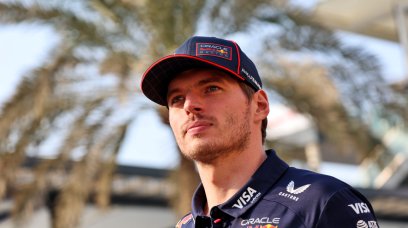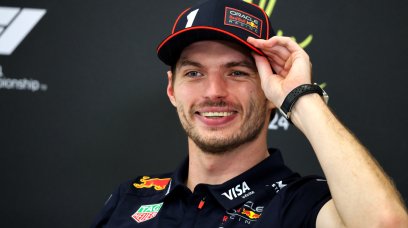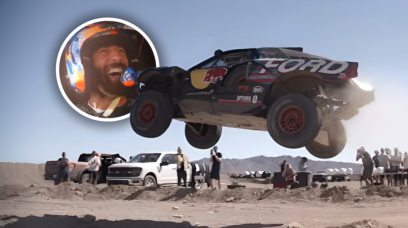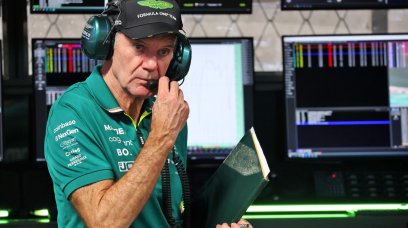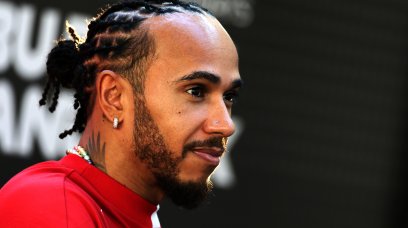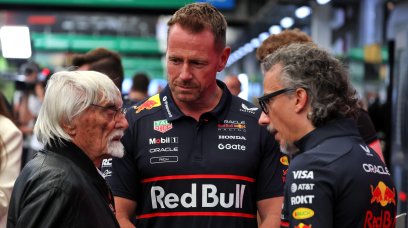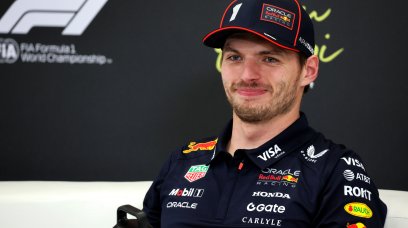Just as Formula 1's cars evolved over the past seven decades, so have launches: where in the early days of the sport a team rocked up with its latest design whenever it was ready - or almost so in some instances - peak launch was reached 50 years later during the height of the tobacco era, with each unveiling being bigger and brasher than what went before. Between these extremes came low-key unveilings, usually during a shakedown, with a handful of scribes and snappers invited to some bleak, windswept airfield or circuit somewhere. The team's welcome party usually consisted of a photocopied press release read over rusks washed down with a mug of tea. The sheet that covered the car until the Big Moment was invariably 'borrowed' from the team owner's laundry cupboard… The reason for the 2000s extravagance was simple: With the marketing of tobacco products progressively outlawed across the globe the only way such brands could feature on TV was via F1; the better the launch spectacle the greater the chances of the brand’s logo being beamed around the world. Hence lavish launches - mainly in exotic locations - drew on some serious choreography that cost millions in any currency.
The era of extravagant F1 launches
As tobacco sponsorship was phased out, so motor manufacturers joined F1, and during this transition teams such as West McLaren-Mercedes and Mild Seven Renault, which benefitted from two revenue streams, truly splashed out, each with millions at their disposal for a single function designed for no reason other than to capture eyeballs. Forget F1's traditional audiences - this was about getting on news and sports broadcasts. Tobacco’s largesse came to an end in 2006; however, some of the extravagance remained, and no stunt was more spectacular than that pulled by McLaren on behalf of title sponsor Vodafone in 2008: Lewis Hamilton was winched in Superman style to separate two jostling Apollo warriors. Ice shows, bespoke Cirque de Soleil performances, street festivals – nothing was off-limits: BMW flew media to Valencia, Toyota hosted guests at a variety of venues ranging from Spanish train stations to its Yaris factory in France and Benetton-Renault drove two cars down Taormina's cobbled alleys and through the Sicilian town's ancient Teatro Greco. "We are not like other teams," said the team's Managing Director Flavio Briatore at the time. "We've not taken over a garage for a day but a whole town…"
Impact of the global economic crisis
The manufacturers, though, staged a mass walkout beginning end-2008 with Honda's exit, followed by BMW, Renault and Toyota a year later. Big money left F1 and no wonder, then, that 2010's launches were little more than a return to ripping sheets off cars in a pitlane prior to their hitting the track for testing wherever - although catering arrangements extended to walking buffets and not soggy sandwiches. Then, as the global economic crisis blew over and money gradually returned to F1, so launches again became more festive affairs - although they were still not a patch on the profligate thrashes of a decade earlier. Still, BWT hosted Racing Point's 2020 launch at its factory alongside a sparkling Austrian lake, and AlphaTauri celebrated its name switch from Toro Rosso with a fashion show featuring its eponymous products. Sauber, too, went all flash - but then it had bags of Alfa Romeo cash to spend in celebration of the cars being named after the Milanese brand. Motor manufacturer money was obviously at play… but the less said by the disastrous deals struck by Williams and Haas with Rokit and Rich Energy respectively the better...
Changes since the coronavirus pandemic
A week later Covid hit F1, necessitating swingeing cuts and a broad roll-over of 2020’s cars for another season after the introduction of F1’s ‘new era’ formula was pushed out a year to 2022. Some low-key unveilings were staged - primarily during testing in Bahrain – although, to be fair, Aston Martin pushed the boat out, but the legendary marque was, after all, making its return via the rebranding of Racing Point. This year, as Covid winds down and the global economy seems set to stabilise, so teams are again taking the high road by celebrating the return of big title sponsors after an absence of a decade. Indeed, seven years ago, then-McLaren boss Ron Dennis – who previously procured Marlboro, West and Vodafone – told this author: "Title sponsorship doesn't exist any more as a concept.”" "If you look at what title sponsorship would normally be, it would be somewhere between 40-50 percent of your budget. Where the budgets are for a competitive team, no company will come in and give you that kind of money." Thus McLaren raced with a host of smaller sponsors. At the time Dennis was largely correct: 80 percent of the grid raced under non-commercialised team names, with the two exceptions being Mercedes (Petronas) and Ferrari with Philip Morris under various corporate guises including Mission Winnow. True, there was the occasional bargain interloper such as BWT with Force India, but other team bosses echoed Dennis's comments. More about the water treatment company below. Last year Aston Martin incorporated Cognizant into its team name, albeit relegating the IT giant to second mention. This year, the green team have gone the full 10 yards by adding another brand to their title portfolio: Aramco Aston Martin Cognizant. That said, Haas cover two bases via a team name that acknowledges their founder and his machine tool company, but lack of a title sponsor surely contributed to the decision to provide only render shots of their car rather than go with the full razzmatazz. However, Gene Haas is unlikely to turn down a good deal if one eventuates, but the Rich episode has made his team more cautious.
What have the 2022 launches shown so far?
The first team out of this year's launch blocks, Red Bull, not only upgraded their existing partnership with computing giant Oracle to full side pod prominence, but also to title status. The rumour mill has it that Oracle Red Bull Racing will add another major sponsor to the mix before the season opener in mid-March in Bahrain. There are suggestions that the company could have secondary title billing, replacing Honda. Read more : Red Bull's new deal with Oracle 'the biggest in F1 history As this is written, news filters through of yet another title deal: that of BWT with Alpine. True, the pink brand held that status with Force India/Racing Point under the team's various iterations but lost out last year to Cognizant. Clearly the Austrian brand - which is also an F1 corporate sponsor and is active in junior formulae - prefers naming rights to the sticker sponsorship it subsequently held with Aston Martin. After four reveals done, it is clear livery launches have taken precedence over technology, with the events being more about showboating team partners than showing off the latest in F1 car design. Indeed, Red Bull's' 'car' was blatantly a mockmobile painted up to announce Oracle's new status. while Aston Martin's car was carefully presented so as not to betray secrets. It remains to be seen how openly the rest present their cars.
What comes next?
Why the flurry of title partners? Given the US-centric status of emerging partners there is little doubt that Netflix has been a major contributor: a company cannot, after all, enter into a multi-million, multi-year deal with a team it has never heard off and the movie series has taken F1 mainstream. Then, F1's expanding calendar provides an increasing number of regional platforms upon which sponsors are able to activate. The major question in F1 marketing circles is, though, whether Ferrari have found a replacement for their historic (25-year) Philip Morris deal - title sponsorship of the Scuderia is absolutely the biggest prize in F1, and arguably in all global sport - and as such will not come cheap, nor will it be available to shady brands. When - not if - it happens, it is likely to be worth well over $100m. Therein lies the irony; F1's budget cap means teams no longer need to stoop below the going rate simply to survive, yet sponsors are throwing ever-increasing amounts of cash at teams and the sport. There is no better endorsement of the current health of F1.
Most read
